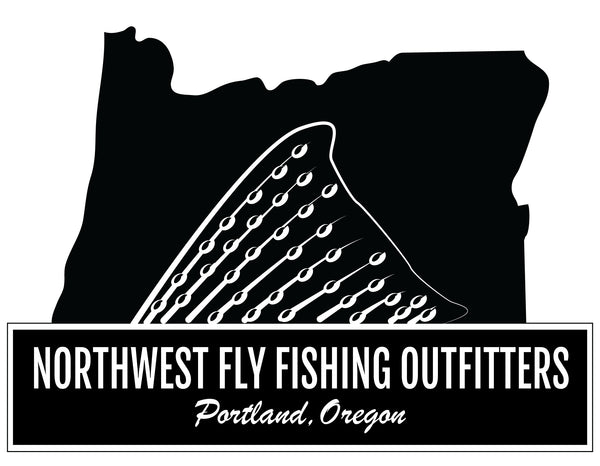
Yogi Berra once famously stated, “When you come to a fork in the road, take it.” Perhaps nowhere is that truer than the unassuming intersection of British Columbia Highways 3 and 93.

A mere 24 miles north of the US border, the aforementioned fork (technically a “T”) presents northbound anglers with two no-lose options: a 45-minute westward drive to Cranbrook and the nearby St. Mary River or a shorter 25-minute eastward drive to Fernie and the better-known Elk River. Lest two rivers sound insufficiently enticing to draw you northward, the Wigwam, Bull, Fording, Kootenay, Skookumchuck, and Michel rivers/creeks are all part of the same river systems and provide staggeringly diverse options.

My first trip to Fernie fell on the heels of 2013’s record floods – the same floods that buried much of Calgary under a few feet of water. Outwardly, the floods churned the Elk River into a battle-scarred mess. Yet, amidst stranded logs and root wads, the chocolatey Elk had retreated to its traditional banks and was coming back into shape. Lucky for us, that same chocolatey mess scared off many anglers and left countless unmolested cutthroat trout eager to chase our flies. The Elk River’s abundant supply of west slope cutthroat trout – many of which grow upwards of 20 inches – were pegged to the bank, noses up, and back on the feed. If you could throw a large hopper imitation or a foot off the bank (where the water was ever-so-slightly clearer), cutties would crush it with reckless abandon. Miss by a foot and you’d better make another cast.

I squeezed in a couple of side trips to Fernie’s diminutive Michel Creek in 2013, once managing 6 robust cutties in 8 casts. I’d go back to Michel Creek at the drop of a hat, but contemporary classified water regulations make that journey more challenging for non-guided trips.

Fast forward to the Summer of 2023 and that same fork in the road. This time, the eastward trip to the Elk revealed a river in all its historical glory. It was rippling fast, wide, and clear beneath a towering mountainscape. Uphill toward Sparwood, a burgeoning smoke plume reminded us of British Columbia’s treacherous fire season. Still, the Elk was fishing well and displayed nary a mark from the old floods
Having seen the Elk again, our true focus was turned toward Cranbrook and the St. Mary River.
The St. Mary River (aka the St. Mary's River) emanates in the Purcell Mountains and flows southeasterly through the East Kootenays to its confluence with the Kootenay River (pronounced “koo-tuh-nee” by Canadians) at Fort Steele. The St. Mary is chock full of feisty west slope cutthroat trout and a dry fly-fishing haven. Its cutties average slightly smaller than those found on the Elk, but they tend to reside further off the bank and will move many feet to crush a poorly cast bug.

The St. Mary typically runs cool and clear during the Summer, thanks to a higher-elevation lake that settles out much of the silt. However, hoot owl hours took effect in mid-August due to an unprecedented heat wave. For us, that simply meant a minor change in plans: We hit the lower river by 7:00 a.m., fished hard all morning, and then paused for a streamside lunch before the 2:00 Hoot Owl cut-off time. After a few post-lunch pushes on the oars, we turned the corner onto the much larger Kootenay (the Columbia River’s largest tributary). There, we tied on some heavy stonefly nymphs and dredged up some stout ‘bows beneath the wooden ramparts of historical Fort Steele.
We lost count of the number of cutties we caught on this trip, and we successfully managed to get a handful of 17 - 20” fish to the net. Still, the real celebration occurred when we nailed our Rocky Mountain Slam. Thanks to the variety of species that inhabit the cutties’ territory, we caught cutties, rainbow trout, cutbows, whitefish, and a brook trout.

I could wax eloquent about Southern B.C.'s fly fishing opportunities, but you really have to experience them for yourself. Before you head north to the fork, stop by NWFFO and grab a variety of big dry flies, 3x leaders, and 3x tippet (these fish aren’t leader-shy). You won’t need any hyper-specialized-and-only-works-here bugs in your arsenal. Foam hoppers, big Adams variations, and just about anything wiggly and buggy will draw rises and takes. Next, do a bit of homework on the rivers and license requirements. Keep in mind that the St. Mary is best enjoyed on a guided trip (St. Mary Angler is awesome and highly recommended) or from a private ranch (we stayed at a riverfront guest ranch near Cranbrook) due to limited public access. The Elk is just the opposite: you can drive along the highway, look for water that suits your eye, and fish till your heart’s content.
Whatever you decide to do, make the day’s drive north into B.C. And, when you came to the fork in the road… take it!
Jeff Bennett

